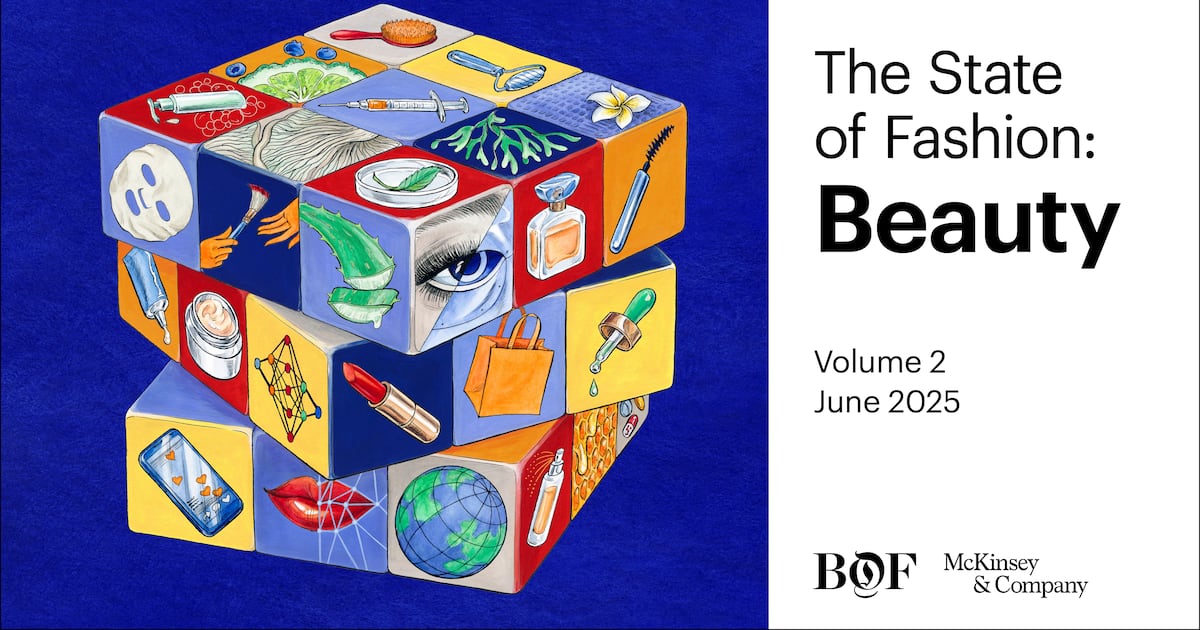Once the darling of the consumer goods market, the $441 billion global beauty industry is showing signs of cooling.
For years, a seemingly limitless appetite for newness in beauty fuelled robust volume and even greater pricing growth — from 2022 to 2024, the sector grew 7 percent annually. Now, geopolitical and economic uncertainty, along with market saturation, are threatening this momentum. A once-clear formula for success is now a challenging puzzle to solve.
Of course, dynamism in the sector persists in pockets, and the market is still growing. We expect the global beauty industry to grow 5 percent annually through 2030. But consumers are broadening their understanding of “beauty” beyond core categories to include wellness, personal care and aesthetic treatments and they are increasingly value-conscious, sceptical of hype and laser-focused on whether products deliver.
So how are beauty executives responding to all the change?
Seventy-five percent of executives in our survey expect consumer scrutiny on perceived value to be the biggest theme shaping the industry. Fifty-four percent say uncertain consumer appetite or restricted spending is the greatest risk to the market’s growth going forward.
As the puzzle shifts, beauty players should recalibrate and sharpen their value propositions to stand out.
Growth — and challenges — colour the industry’s outlook
Opportunities in beauty remain, but headwinds including consumer fragmentation, category pressure and regional disruptions obstruct the path ahead.
In the US, the beauty market is still an attractive play, given its size and strong market fundamentals. But political and economic volatility clouds forecasts.
In markets like the Middle East and Latin America, where wealth is growing, there are opportunities for global brands — but they will face strong competition from local players. Further east, we expect the Chinese beauty market to rebound in the mid term, though growth is unlikely to reach pre-pandemic rates. Europe will grow in line with global trends, but economic challenges may dampen volume growth.
Consumers turn up the pressure
The world is changing and so are beauty consumers’ preferences. Shifting demographics have splintered traditional customer profiles. Yesterday’s segments defined purely by demographic differences no longer hold, and attitudinal consumer insights and hyper-localisation are needed to win.
Then, there is the question of value. Strong uptake in beauty spend plus higher inflation has pushed shoppers to pay closer attention to whether products perform. Consumers may still consider beauty to be an affordable discretionary item, but that doesn’t mean the industry should take the “lipstick effect” for granted. Products in all categories and across all price tiers must demonstrate their prices are justified: 83 percent of consumers surveyed feel haircare is affordable, but that figure drops to 67 percent for fragrances. To cut through the noise, beauty labels will need to increase their investments in R&D, emphasise their unique value drivers in marketing campaigns, and create entry-level price points for aspirational and the most discerning beauty shoppers.
Purchase considerations are also evolving. Prominent, public-facing beauty founders were a marketing accelerator for many upstart brands, helping to push them to greater heights. Today, public-facing founders are among the lowest consumer consideration factors. While famous founders can still build brand awareness, a brand’s staying power depends on much more. Beauty labels that previously hinged their ethos on specific demographic identities or wholly emphasised sustainability may no longer find success with these branding strategies. Instead, shoppers are focused on product efficacy and a shared aesthetic point of view.
Commercial functions are due a refresh
Two of the most important commercial functions for beauty companies — marketing and retail — are undergoing a reckoning of their own. An overreliance on paid marketing has saturated digital channels while influencers’ sway is also waning. Brand marketing can help rebalance the scales, but only if beauty players have an ownable, original story to tell.
Consumers still prefer brick-and-mortar stores for discovery and purchase, but e-commerce, and specifically marketplaces, have become a go-to destination for shopping and replenishment, thanks to widespread discounting and the convenience of ultra-fast shipping. For both brands and retailers, some of these practices may dilute brand positioning or margins. Instead of trying to solely compete on speed or promotions, beauty executives should focus on creating a compelling shopping experience that addresses the needs of their target customers. Technology-driven tools such as AI-led agentic commerce can also yield gains, augmenting the online shopping experience by autonomously carrying out tasks for customers and even helping them to make purchases.
While only 10 percent of surveyed executives are using AI regularly today, 60 percent are in an exploratory phase. More robust AI adoption — including in research and development, quality control, social listening and marketing personalisation — could unlock more profitable growth. However, when used in any consumer-facing capacity, caution should be taken so as not to erode customer trust.
The beauty industry will maintain its allure for both investors and consumers, but the era of more-is-more consumption has ceded ground to a new focus on value, differentiation and individuality. Addressing these factors is critical to solving the puzzle at hand.
The five industry themes that will set the beauty agenda:
1. The Fragmenting Consumer
Shifting macro dynamics, wealth patterns and migration are reshaping shopper profiles across both mature and emerging markets. To stay competitive, companies must prepare for disruption and anticipate changes across generations and cultures. Each market will have layered nuances — hyperlocalisation is needed to meet consumer needs.
2. True Value
Accessibly priced beauty brands have proven they can challenge pricier counterparts on efficacy, innovation and virality, raising consumer expectations across the market. As consumers grow more selective and cost-conscious, brands must demonstrate a clear and ownable value proposition, regardless of price.
3. Beyond the Founder
Over the last decade, an avalanche of brands with public-facing founders emerged. Communities were often built around their personal aesthetic, lifestyle or social presence. But while a prominent founder can propel growth, their appeal alone is insufficient for long-term success. With many branding niches now overcrowded, quality and originality will be key.
4. Marketing’s Balancing Act
Brands must rebuild their creative marketing muscle and take chances in a crowded market. As growth marketing becomes even more expensive thanks to the oversaturation of channels, leaders will need to strike a smarter balance between brand and performance marketing. Dare to be original — it will pay off.
5. Channels at a Crossroads
Everyone wants a piece of beauty. Online marketplaces continue to gain share, putting pressure on speciality and mass retailers looking to expand their beauty aisles. As assortments begin to assimilate and channels increasingly blur, the bar for differentiation will rise — especially in physical stores where most beauty discovery still happens.
For a deeper look into the report, join us for the global livestream of The Business of Beauty Global Forum on June 9 and 10, 2025. Click here for all the details on how to sign up.
BoF Insights is The Business of Fashion’s in-house advisory and data team. We partner with leading fashion and beauty brands and investors to help them sustainably grow for the long term. Get in touch to find out how we can support your business.


